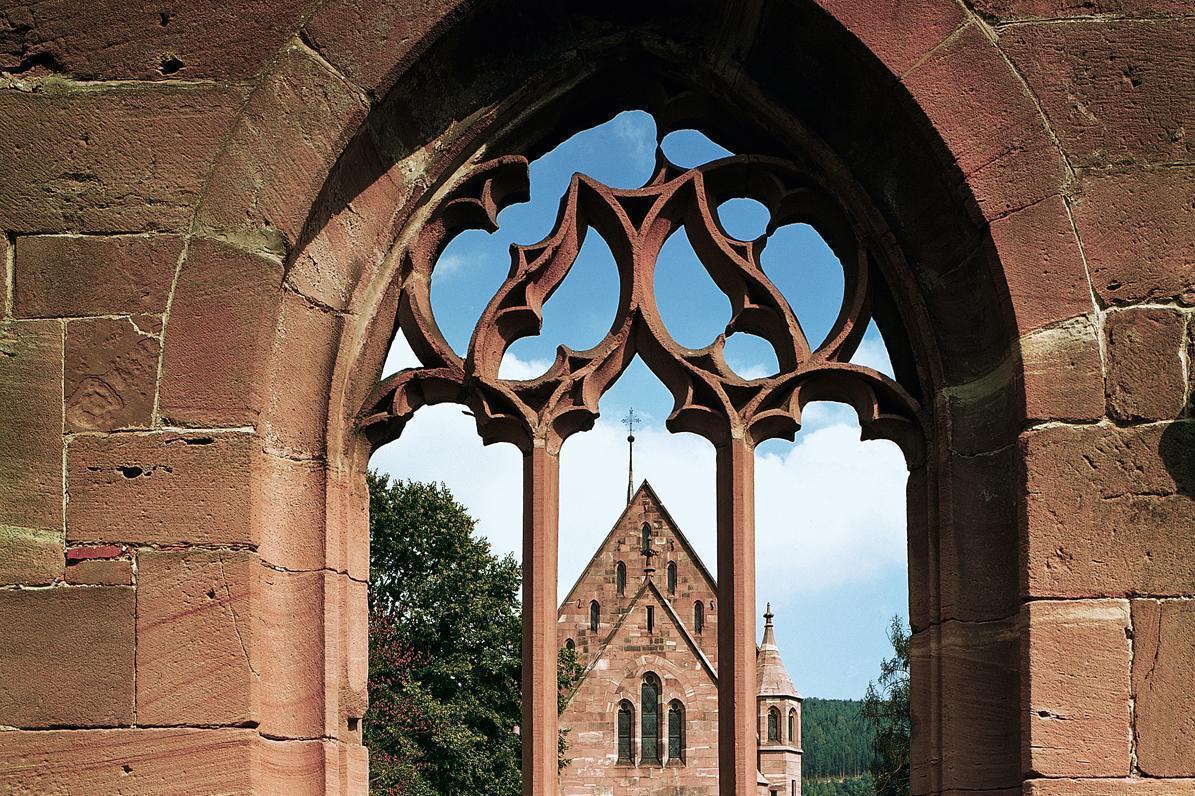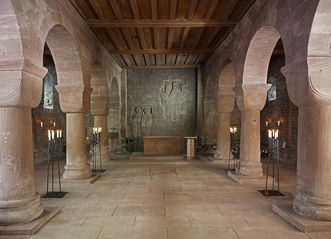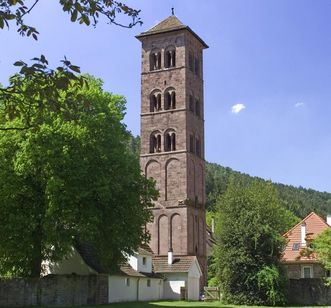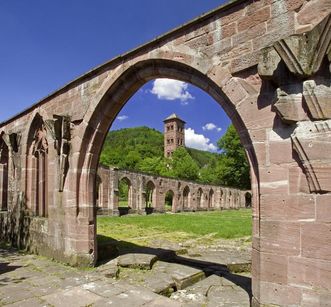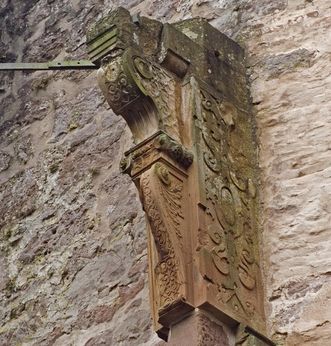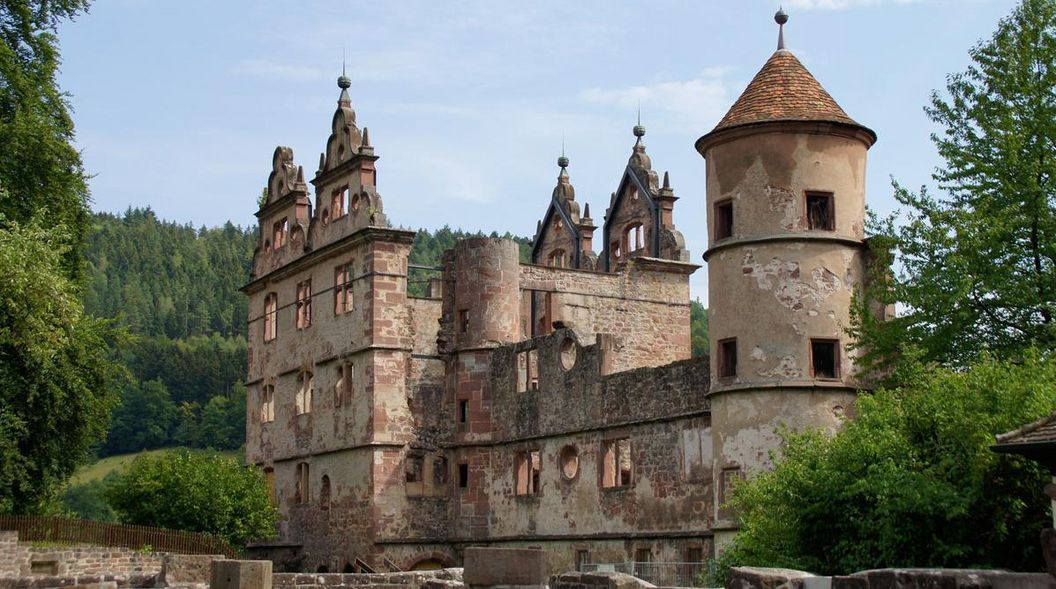ROMANESQUE CUSHION CAPITALS
Hirsau's 9th-century beginnings are buried deep in the ground. Of the 11th-century monastery buildings, only the Church of St. Aurelius remains partially intact today. More recent excavations revealed information about its interior: The church once had a wooden flat slab roof and was characterized by massive round arches atop short round pillars with the Romanesque cushion capitals typical of Hirsau.



